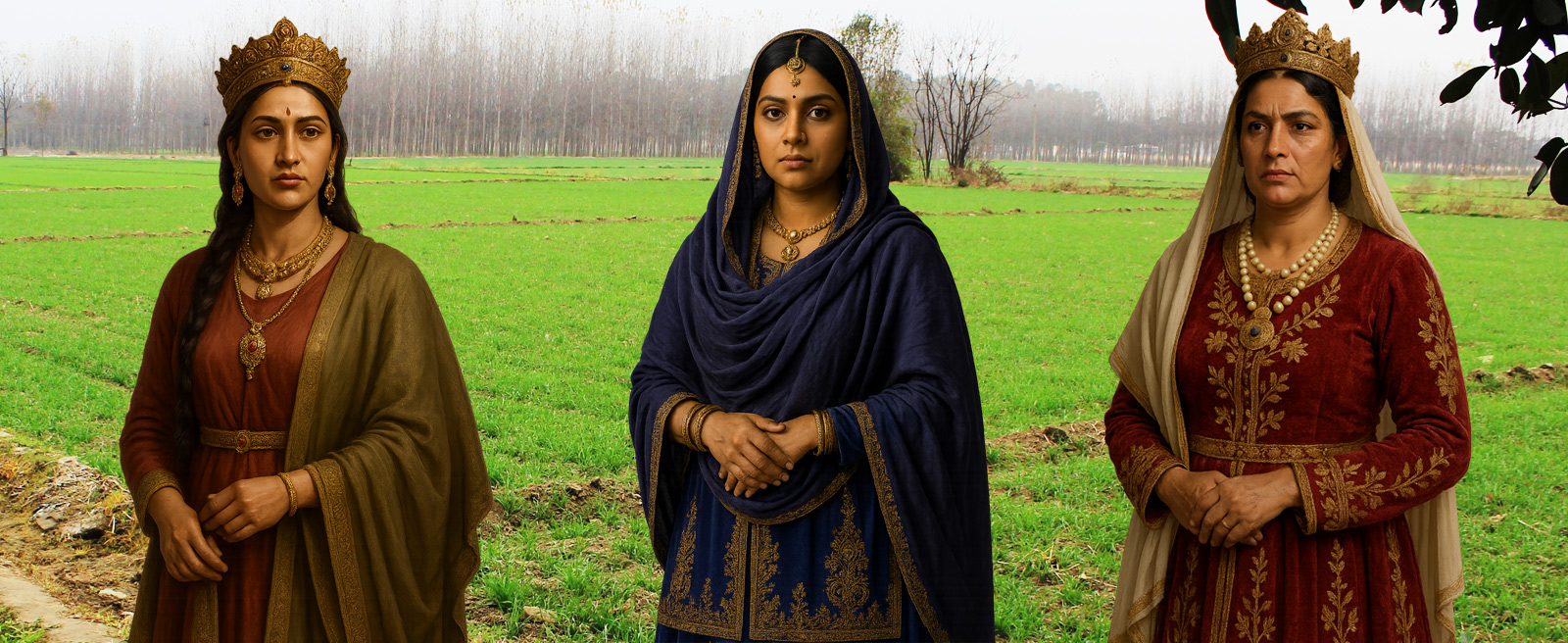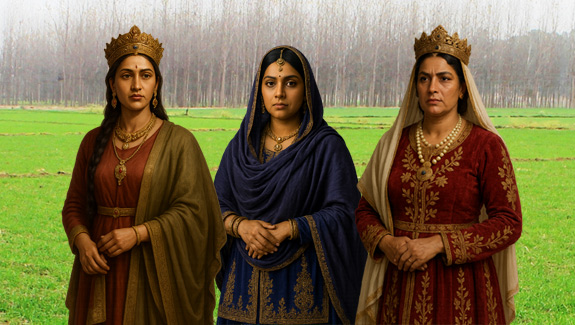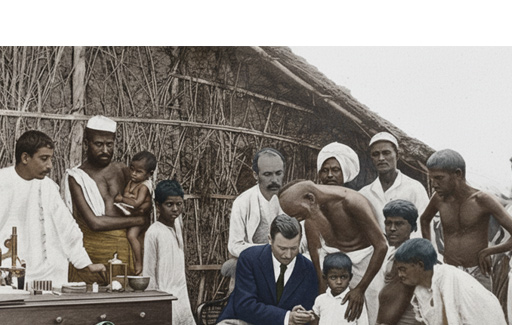Punjab has always been a place with a rich history filled with powerful kings, epic battles, and vibrant culture. While there are plenty of stories about warriors and rulers, we can’t forget the remarkable women who stepped up to lead in a time when it wasn’t common at all. These women ruled with strength and wisdom and made their mark on the history of South Asia.
Here are three notable women from Punjab’s past whose names are still remembered today.
Queen Mangla – The First Known Female Ruler of Punjab
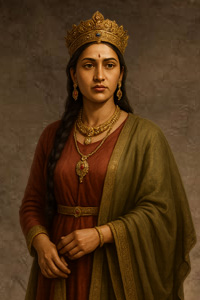
Back in May 326 BCE, Alexander the Great battled King Porus by the Jhelum River. Greek historians say Alexander won, but he was so impressed with Porus’s bravery that he made him king again. Sadly, Porus later met his end through a plot by Chanakya, as mentioned in Dr. Buddha Prakash’s book “Maharaja Porus.”
Porus’s son-in-law Raja Ajay Dat also died in that same battle. After losing her father and husband, Princess Mangla took over their kingdom. Known for her courage, leadership, and virtue, she ruled from a fortress near what is now called Mangla Dam.
Later in life, she embraced a spiritual path and became a well-respected ascetic, singing mystical songs that drew followers from far away. She became known as Mangla Devi, and Tuesdays (Mangla) were reserved for her spiritual gatherings. There are still three temples at the old fort, and the scholar Al-Biruni even mentioned seeing her statue there.
It’s important to note that Mangla Devi, from Hindu mythology in Malabar (whose real name is Parimala), is a different figure, though people sometimes mix them up. The Indian city of Mangaluru is named after Mangla Devi, not our Queen Mangla of Punjab.
Even after 2,350 years, Queen Mangla, daughter of Porus, remains a significant name as Punjab’s first known female ruler.
Queen Mangho – A Ruler from the Gakhar Tribe
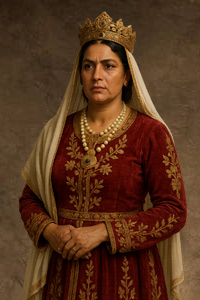
The Pothohar region, located between the Indus and Jhelum rivers, was ruled by the Gakhars, a tribal people, from 1008 to 1765. Some Gakhar rulers even expanded their territory to Lahore. Some say they were locals while others believe they were originally from the Kayanian royalty of Persia who came here with Sultan Mahmud of Ghazni.
One notable Gakhar, Sultan Rajar Khan, built a fort on a mountain near the Jhelum River. His descendant Sultan Allah Dad Khan married Rani Mangho, the daughter of a Janjua chief from Makhiala.
After a difficult battle, Sultan Allah Dad Khan, feeling disheartened by the loss of life and needing to care for their young son, handed the reins over to his wife Rani Mangho and went into seclusion.
Rani Mangho ruled wisely, starting welfare projects, boosting agriculture, digging canals and wells, and renovating forts like Dan Gali and Ramkot. She maintained peace and justice in her lands. There’s even a story that one of her daughters married Prince Akbar Sani, the son of Emperor Aurangzeb.
However, not everyone was happy to see a woman in power. A local tribal chief named Haibat Khan opposed her rule simply because she was a woman. In response, she decided to have him confined within the fort’s walls. While many stories about her and Allah Dad Khan come from Gakhar oral tradition, she stands out as a rare example of a woman who ruled in Northern Punjab.
Maharani Jind Kaur – The Last Flame of Sikh Resistance
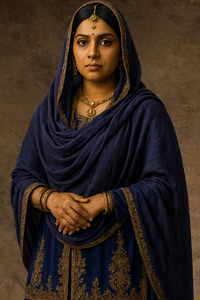
Maharani Jind Kaur, Maharaja Ranjit Singh’s youngest wife, married him in 1835 when she was just 18. She was known for her intelligence and sharp mind. Their son Duleep Singh was born in 1838, just a year before Ranjit Singh passed away.
In 1843, when her son was only five, he was put on the throne, but it was Jind Kaur who really held the power. She ruled Punjab for two years and was famous for her courage, even recognized by the British for her leadership.
As Punjab was dealing with intrigue, a weak army, and a strained treasury, Jind Kaur pushed for military action against the British. On December 11, 1845, Punjabi forces crossed the Sutlej River to confront the British troops. Despite betrayal from some leaders, they managed to take out two British generals.
The battles at Ferozepur and Chillianwala dealt heavy blows to British forces, but treachery from leaders like Teja Singh ultimately led to Punjab’s downfall. By February 12, 1846, the British entered the region.
On March 8, a treaty was signed. The British recognized Duleep Singh as ruler and called Jind Kaur regent, with Lal Singh as prime minister. But the British also took the Doaba region and Kashmir to settle debts. Gulab Singh became the ruler of Kashmir.
The British set up a court in Lahore with 52 chiefs to take power away from Jind Kaur and give it to the British Resident. They planned for Duleep Singh to take charge in 1854, but the Governor-General Lord Hardinge saw Jind Kaur as a threat and imprisoned her.
Her unjust treatment sparked anger among Punjabis, leading to uprisings in places like Multan, Gujrat, and Hazara. After defeats and betrayal, General Sher Singh, the last Sikh commander, surrendered on March 14, 1849, prompting an old Sikh leader to claim, “Today, Ranjit Singh truly died.”
In 1849, Jind Kaur broke free from imprisonment and fled to Nepal. Meanwhile, her son was sent to London, where he converted to Christianity. They reunited in Calcutta in 1861 and later moved to London, but the British considered her a threat and discussed deporting her. Instead, she lived in London until she passed on August 1, 1863.
Today, Jind Kaur is celebrated in Indian history as a brave queen who resisted British rule. Her jewelry was even auctioned in London recently.


